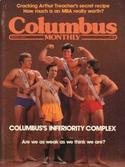From questions of upward mobility and opportunity to concerns about access to health care and education, rural America clearly isn’t perfect. read more »
Geography
Stop Overlooking the Richness of Rural Life
- Login to post comments
Around San Francisco’s New South of Market Transit Center
In the 1980s, the city of San Francisco experienced a strong reaction against continued development of its dense financial center skyscraper district north of Market Street. that the term Manhattanization was popularized by the alternative biweekly, San Francisco Bay Guardian, which channeled the interest of many residents to preserve both their neighborhood and the iconic, historic buildings in downtown San Francisco before they were replaced by new, taller structures. read more »
- Login to post comments
Where Salaries Go Furthest in 2019: The Small-City Advantage
Big cities are the engines of the modern economy. They offer workers a range of opportunities — and employers a range of workers, customers, and infrastructure — that smaller places generally can’t match. But when it comes to what many job seekers care about most, smaller cities often are best. In particular, for most jobs, salaries are higher in smaller places after accounting for the cost of living.
read more »
- Login to post comments
Ridership Falls Another 2.9 Percent in June
June 2019 transit ridership was 2.9 percent lower than in June 2018, according to the Federal Transit Administration’s most recent data release. Ridership dropped in all major modes, including bus, commuter rail, heavy rail, and light rail. Ridership also dropped in 41 of the nation’s 50 largest urban areas, declining even in Seattle, which had previously appeared immune to the decline that is afflicting most of the nation’s transit industry. read more »
- Login to post comments
High Metabolism Money
As part of my usual exploration of towns and cities around the country I wander up and down streets taking photos. I have an inexhaustible supply of pictures of the generic American landscape. But every once in a while someone will come running out of a building demanding to know who I am and why I’m photographing their property. Bank managers are frequent objectors. read more »
- Login to post comments
A Blast from the Past in Charlotte and Columbus
I saw a couple of recent reposts containing very interesting material from several decades ago in Charlotte and Columbus.
The first is a 25 minute TV special from the 1960s looking at a proposal to issue bonds to fund urban renewal in downtown Charlotte. A few things struck me about this. read more »
- Login to post comments
America’s Regional Variations Are Wildly Overstated
The idea of America’s regional fracture has become a widely accepted assumption among the media and academic set. Recent book releases that focus on American divisions such as histories of the south-western El Norte region to the so-called “local, insulated, exceptional, isolationist and provincial “heart land”, as well as books going deeply into the south’s unique history, are regularly on the best-seller tables of bookstores around the country. read more »
Is It Time To Rethink Density?
With new forecasts of record population growth across Australia’s major capital cities over the next few decades and affordability remaining a challenge, is it time to reconsider the core principles and policies that guide the management of this growth? read more »
We Need More Family Friendly Cities
My latest piece is now online at the Institute for Family Studies. It’s a look at what it would take to make more family friendly cities. Here is an excerpt: read more »
- Login to post comments
Passenger Travel in Europe and the US: More Similar than Different
Probably one of the most enduring myths about the differences between Europe and the United States is that Europeans travel mainly by trains and transit, while Americans cling to their cars and airplanes. This misunderstanding comes in part from what I have called "Louvre Syndrome". read more »
- Login to post comments





















